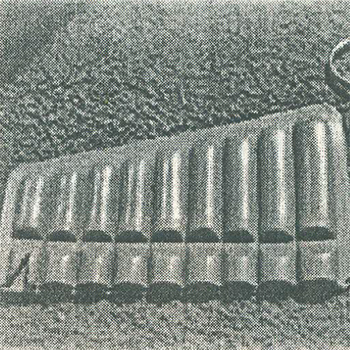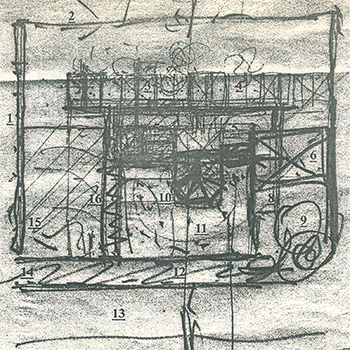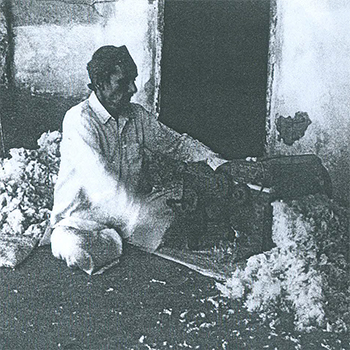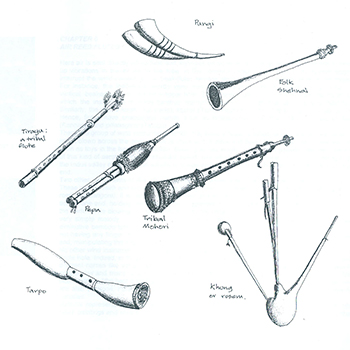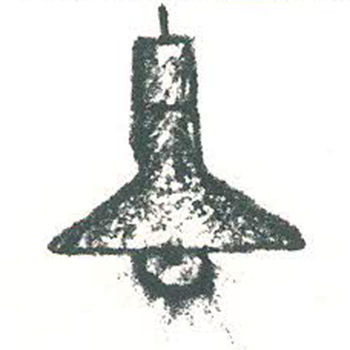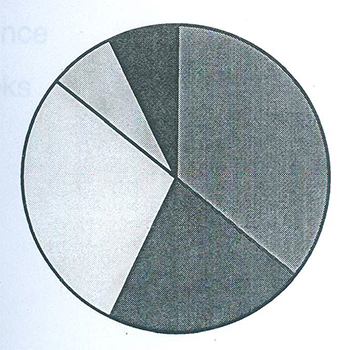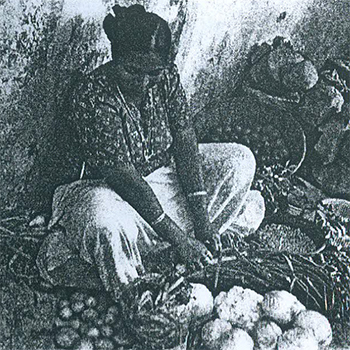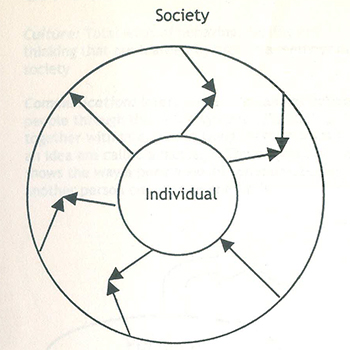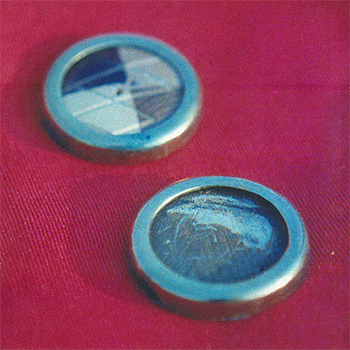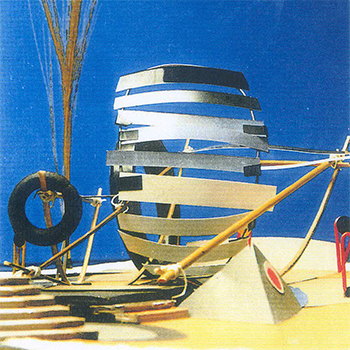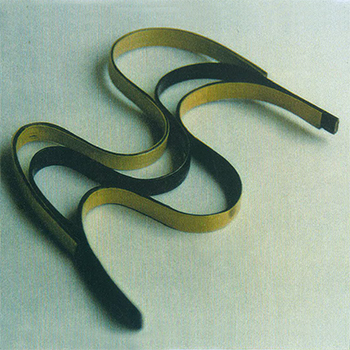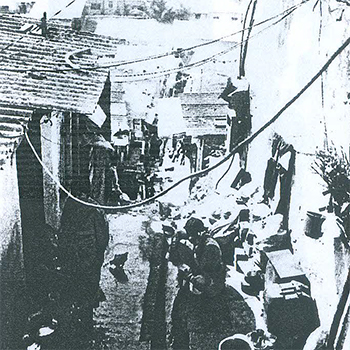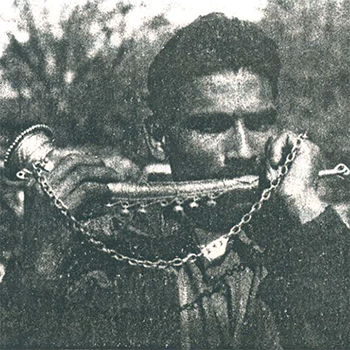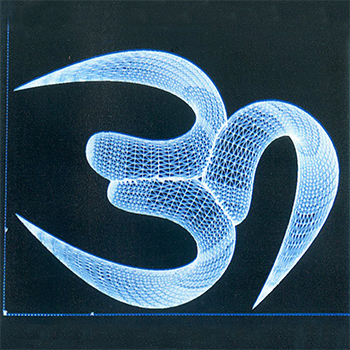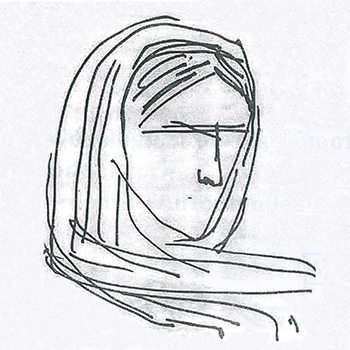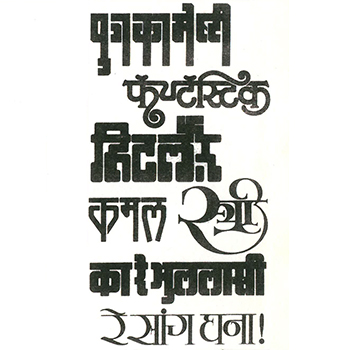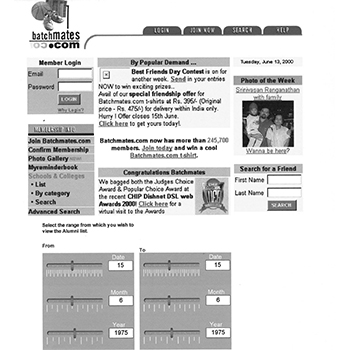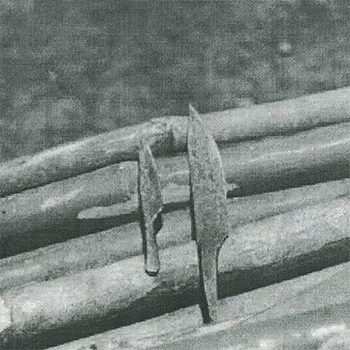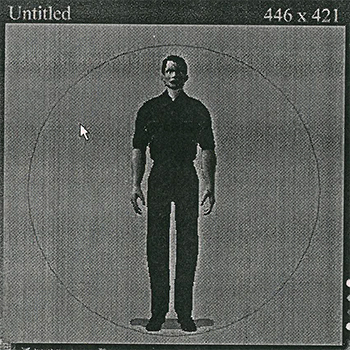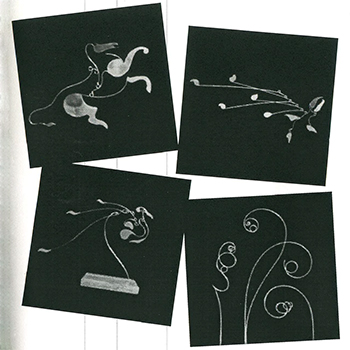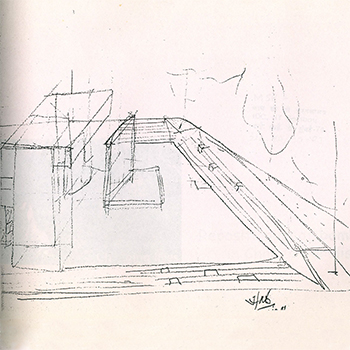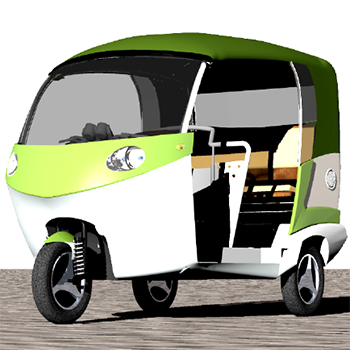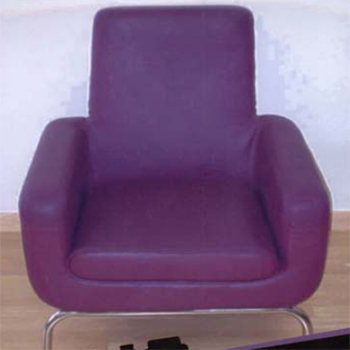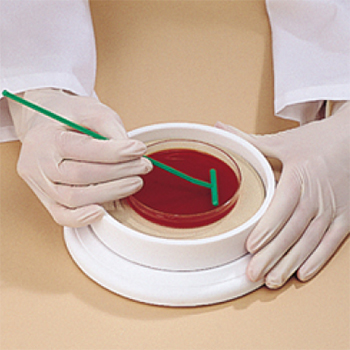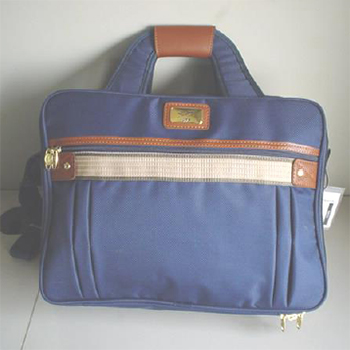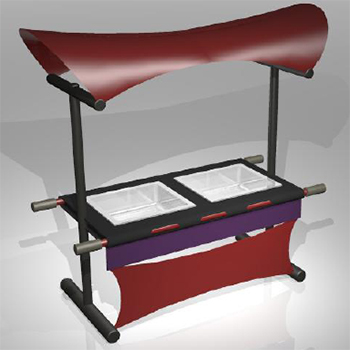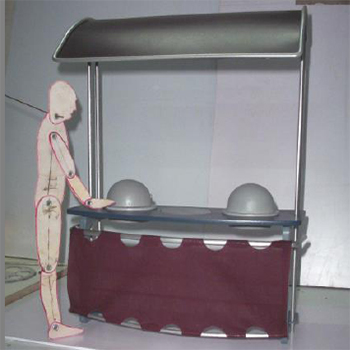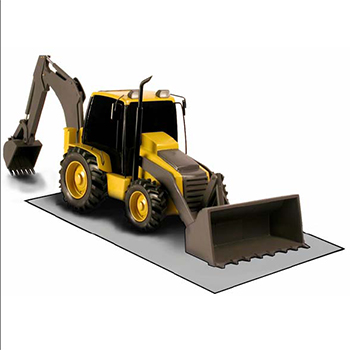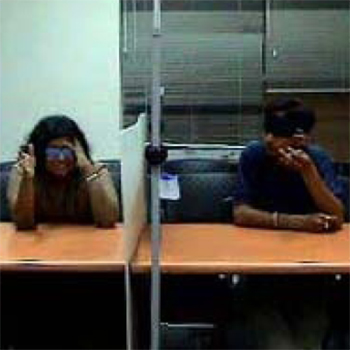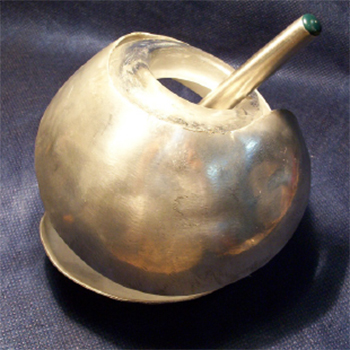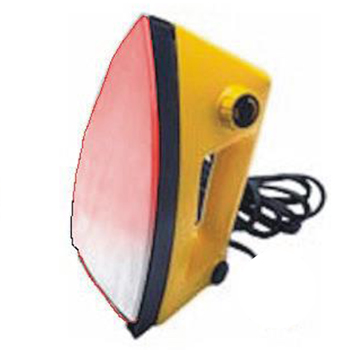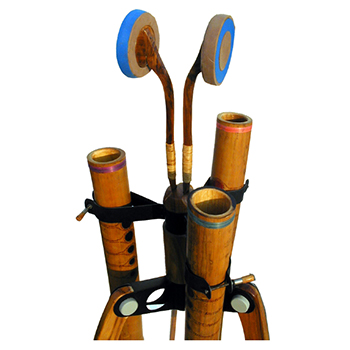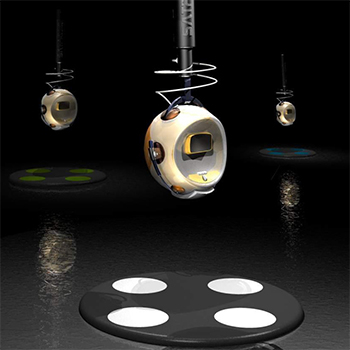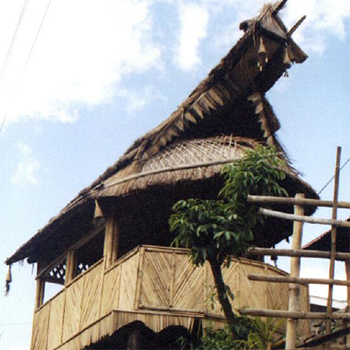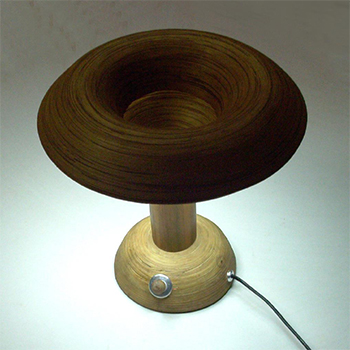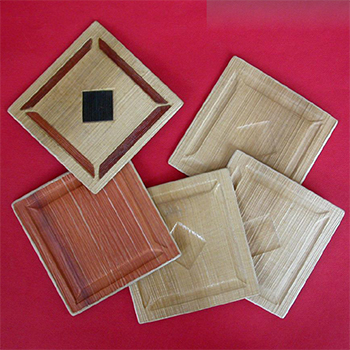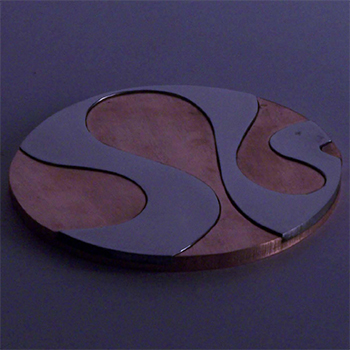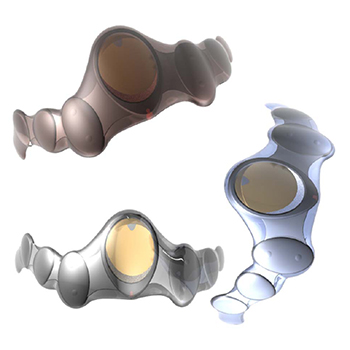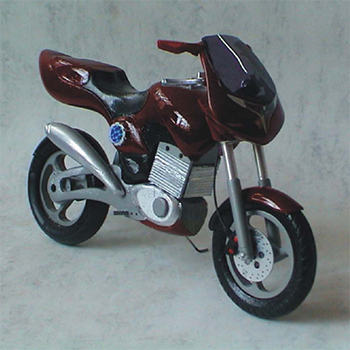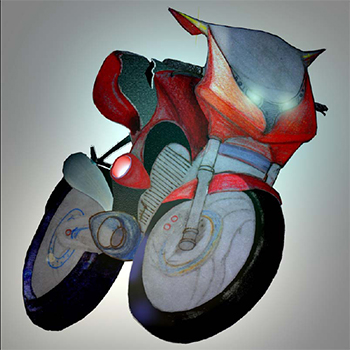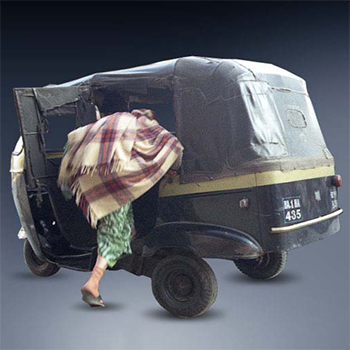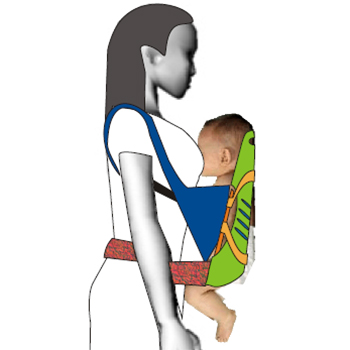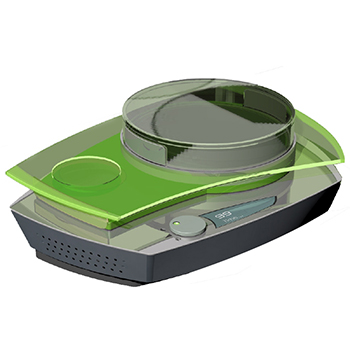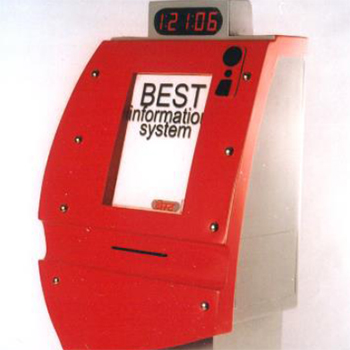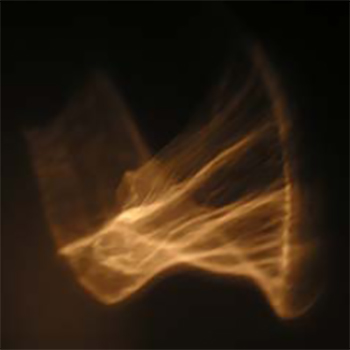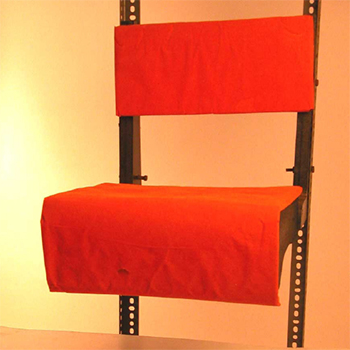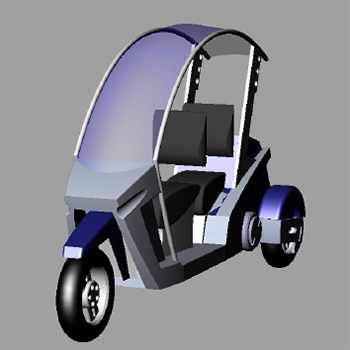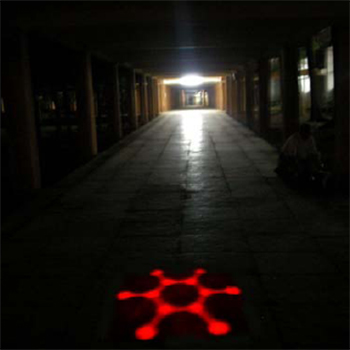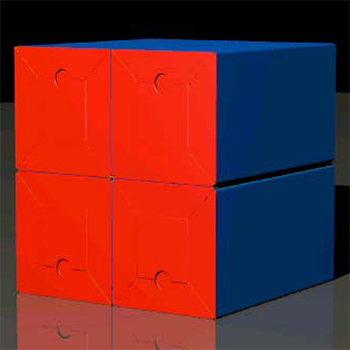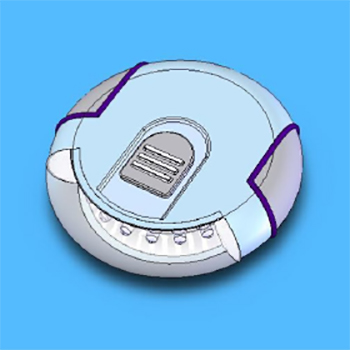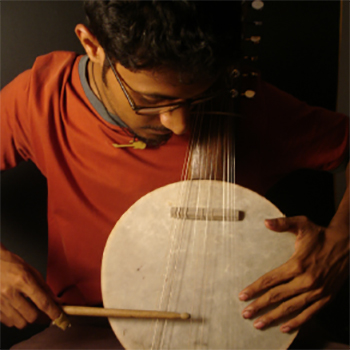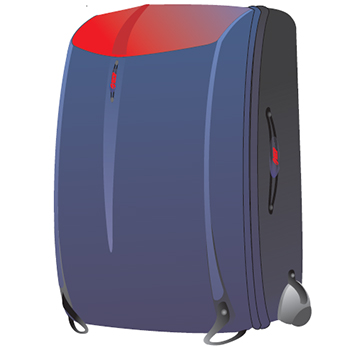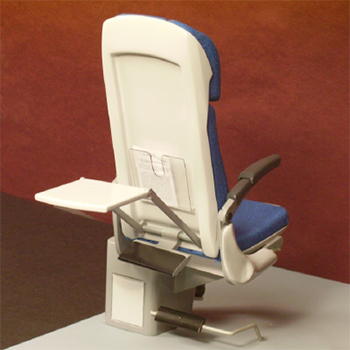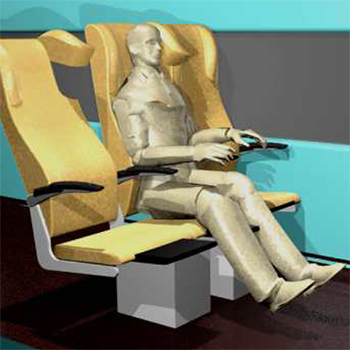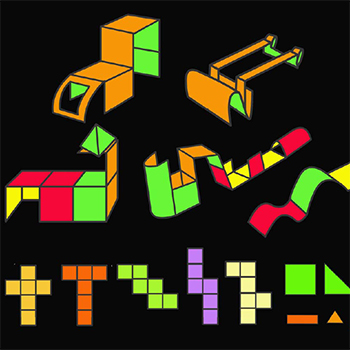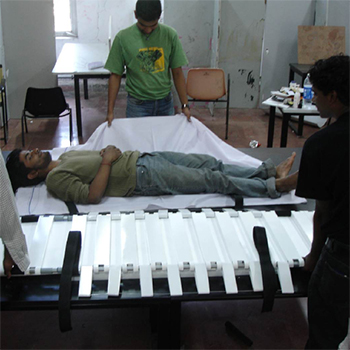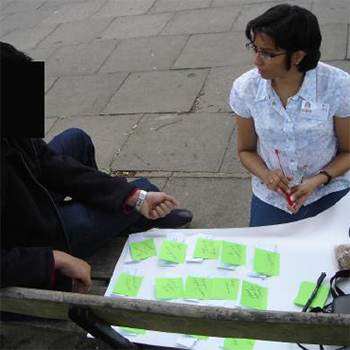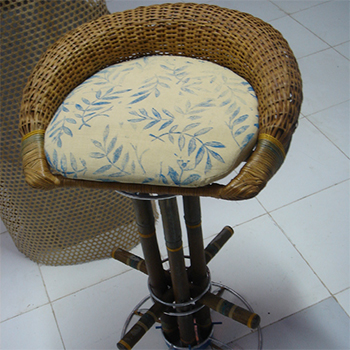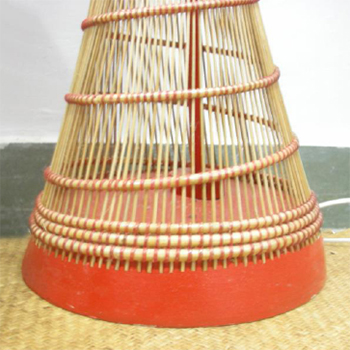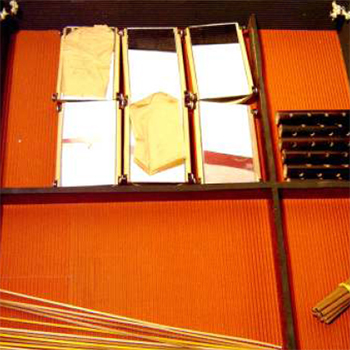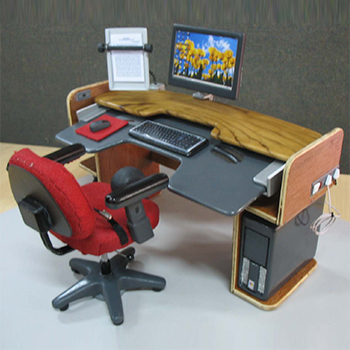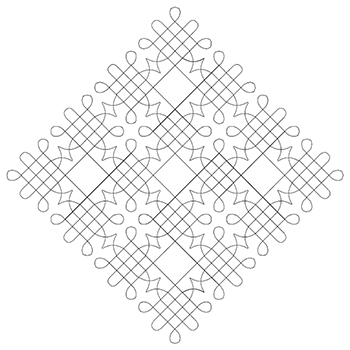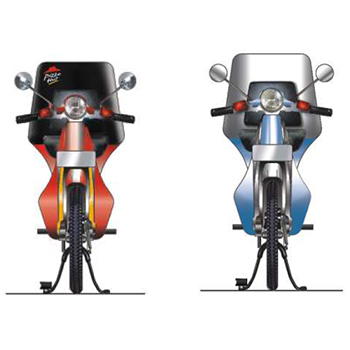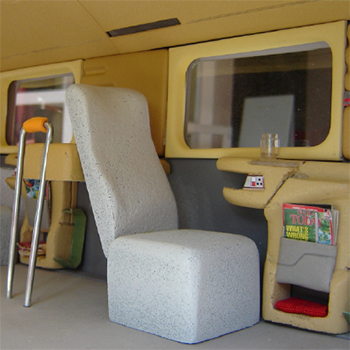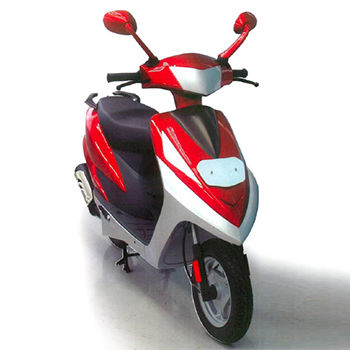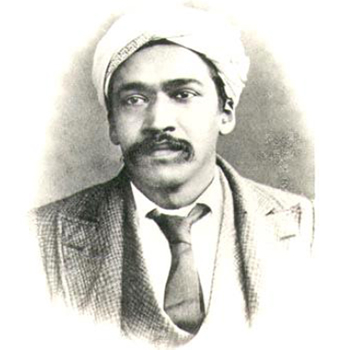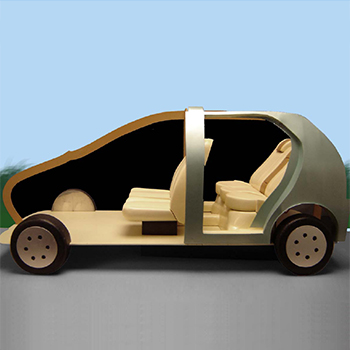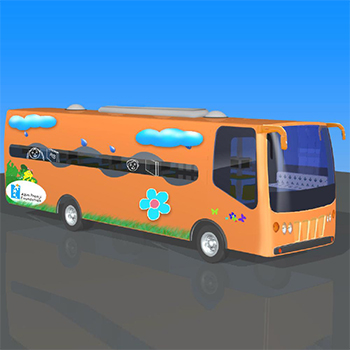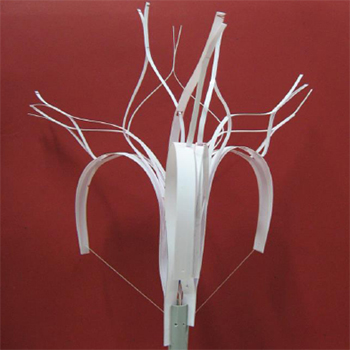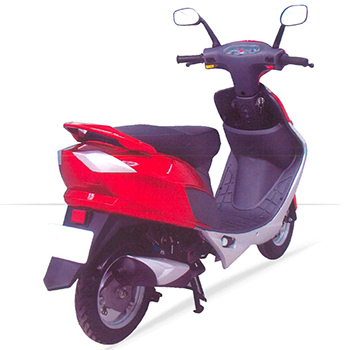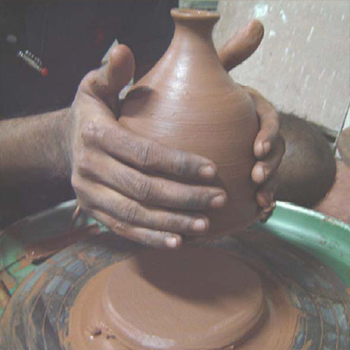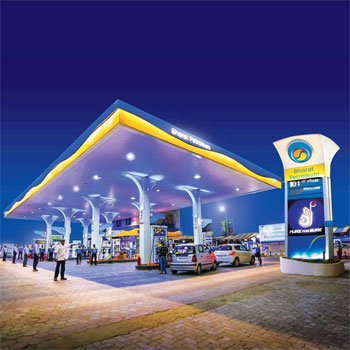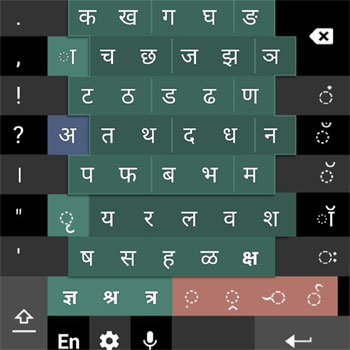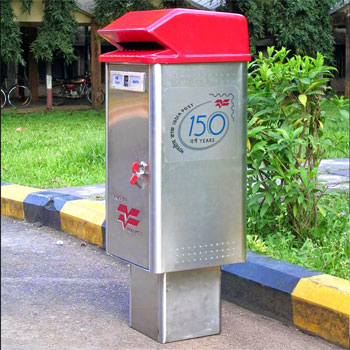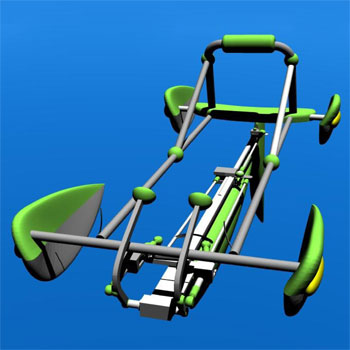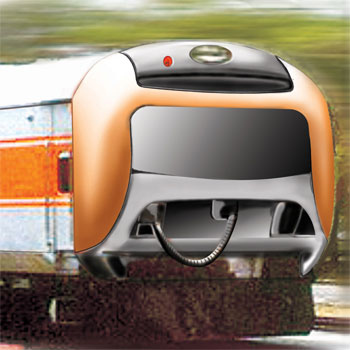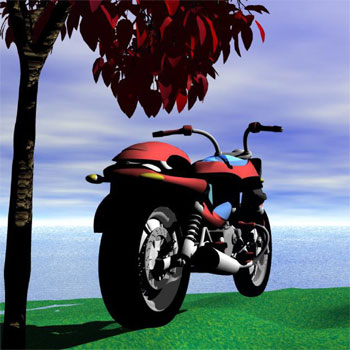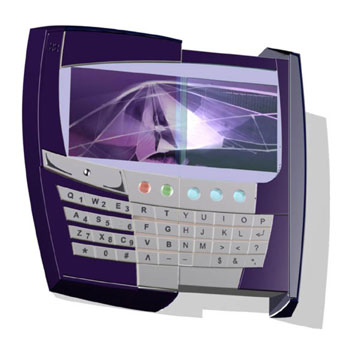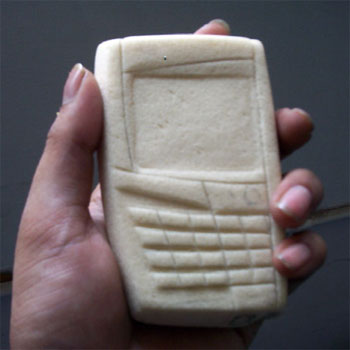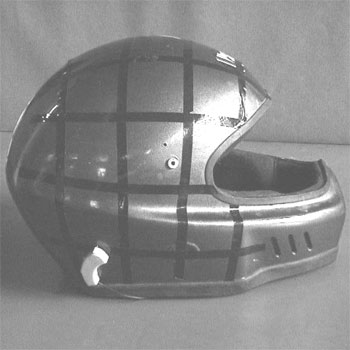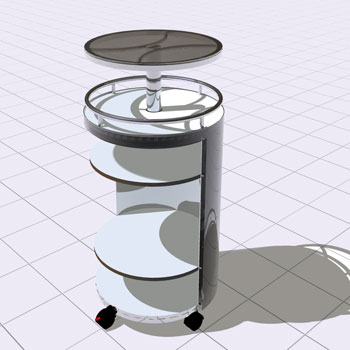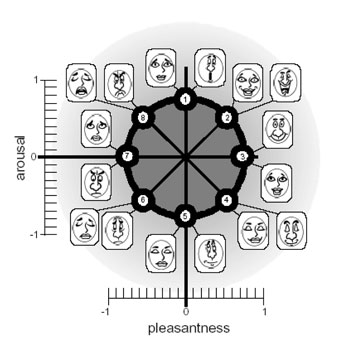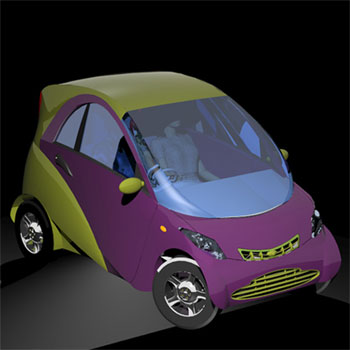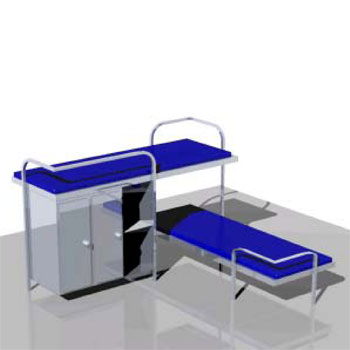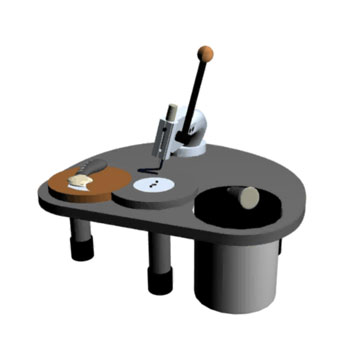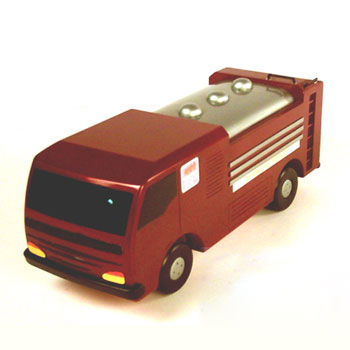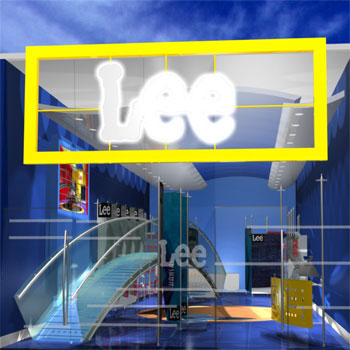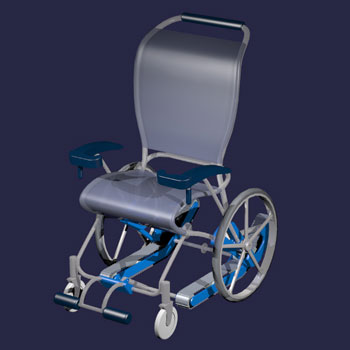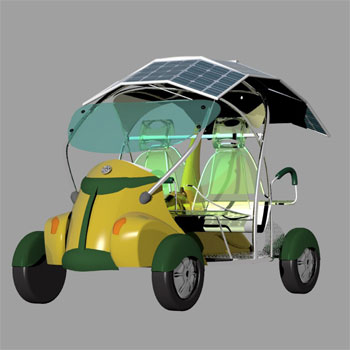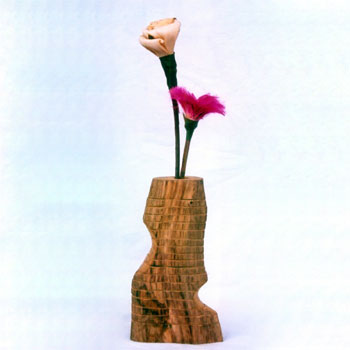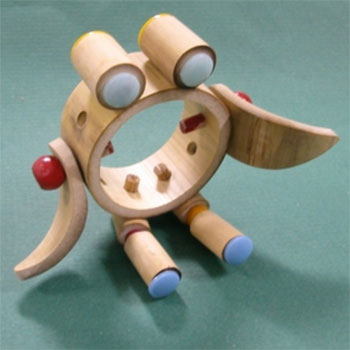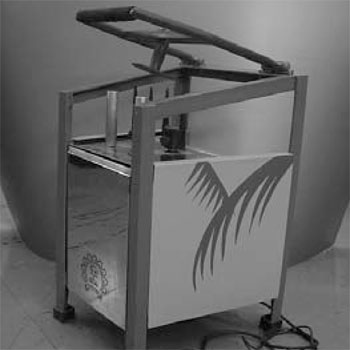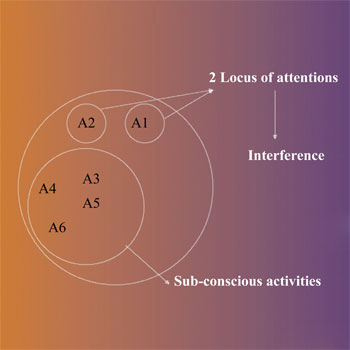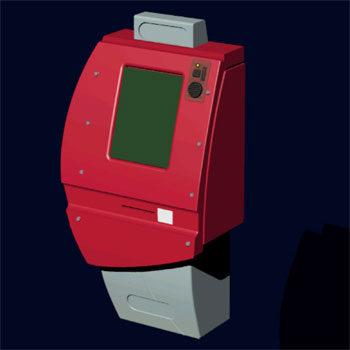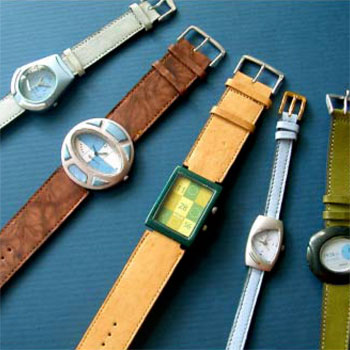1999-2008
Batch 1997-1999
(16 items)
Batch 1998-2000
(11 items)
Batch 1999-2001
(8 items)
Batch 2002-2004
(57 items)
Batch 2005-2007
(49 items)
Batch
(4 items)
Batch 2001-2003
(43 items)
1997-1999
(16 items)
by Anand P Rajhans
Whistle-making in terracotta is a dying art. Only a few potters from Patan are making these whistles for sale. To make a whistle in terracotta is a difficult thing, from the potter's point of view. Potters do not have a particular method for making them. Many people do it through experience and skill. Recently, there was an article published in a Russian book ("Russian Folk Style Figuring" by Genndi Blinov). That article shed light on the present situation of potters in Russia. It Says-Will Folk Craft Survive?
"This is a question that arises quite often. Comparing the old Filimonovo, Kargopol, or Dymkovo toys with their modern counterparts that one can buy in craft stores, one cannot help but notice that the new toys are usually at quite a disadvantage. Not so long ago, craftsmen managed to create a brilliant effect using just two or three colours. The simple designs on Vyatka toys, derived from the clothing of the period or ancient pagan symbols, were eminently suitable for clay. They were executed with light mastery and always bore the individual mark of their creator. Recently made folk toys are often painted garishly in colours that fail to combine harmoniously. This does not mean, of course, that the young artists have produced nothing valuable, but as a rule, modern ware from Vyatka, Kargopol, or Filimonovo is inferior to its predecessors. One is compelled to conclude that the craft is declining. Art critic Vladimir Stasov expressed similar fears nearly a century ago. He wrote sadly that folk craftsmen's objects for everyday use were rapidly disappearing to make way for new ones, which, while more serviceable and convenient, lacked the originality and loneliness of their older counterparts. Stasov pointed out that it was time to start collecting, describing, and reproducing those objects, for in his opinion it was a matter of decades or even years before they would disappear without a trace. The time for folk craftsmen is indeed passing. Young people do not show much interest in crafts. They prefer to become drivers, doctors, airline hostesses, psychologists, or actors. But even if a young person takes up a craft and proves talented, he or she is still our contemporary, with a modern mentality and perception of the world. He or she may master specific techniques and, at best, grasp the mood of the old craftsman embodied in his work. But that is all. Under modern conditions, the imagery typical of folklore, that kernel of genuine folk art is bound to be lost. The Soviet state does a great deal to preserve folk crafts and give new impetus to the development of old art centres. Nearly 200 crafts have already been revived, such as toy making in Kargopol, Dymkovo, Filimonovo, Bogorod Skoye, Semyonov, and Abashevo. In the villages of Polkhovsky Maidan and Krutets, toy making began to develop very recently, a fact that obliges one to be cautious when making prognostications concerning the destiny of folk art. The old crafts may also assume new significance if they manage to transcend the production of souvenirs. Art critics note that even now, objects made by folk artists, like pottery, baskets, and lace, can find a use in everyday life. Folk art as a reflection of a certain perception of the world may be coming to an end, but some of its branches continue to exist and will most likely exist as long as poetic perception itself, which draws on the lifestyle in the countryside, agricultural labour, old traditions, and proximity to nature, all of which are still a part of rural life. There is no reason to suppose that this will suddenly cease to be reflected in objects d'art. A heartening sign is a revival of interest in folk crafts not only in towns but among country people, who until recently tended to attach importance to urban culture only, treating the work of their fellow villagers with ironic neglect. This welcome change has been brought about by the higher cultural level of the rural population, the efforts to popularise folk art by arranging exhibitions on all levels, and the encouragement of folk artists, many of whom have even been awarded state prizes. The revival of interest in traditional folk art, especially in the place of its origin, and appreciation of its value are certain to bear fruit. One should like to believe that the folk crafts will not confine themselves to the production of souvenirs and that they will promote understanding among nations. The language of art needs no interpreter. For a student of the history of a nation, nothing can be as revealing as folk art. And better knowledge of each other is something that we all need in an epoch that has made it imperative that relations between the peoples of the earth be based on mutual trust and respect".
The situation of folk craft in India is similar. The new generation of potters is not interested in playing with clay as their means of livelihood. It is a tentative attempt in the direction of reviving the dying art of whistle making.
by Anshuman Singh
The purpose of the experiment was to study the role and potential of mental imagery in the architectural design process. To study the use of only mental imagery as a feedback while designing in the absence of other media, viz., sketching. This experiment is a continuation of previous research on industrial designers. The experiment was made to study architects to ascertain the role of mental imagery, which is different in scale and complexity than industrial design.
This was achieved by using an experienced architect and blindfolding him during the act of design. The results achieved clearly indicate that he was able to use mental imagery to assist him in the design
by Avinash Bhalerao
Logical and practical thinking always leads to better solutions to the problem. We always try to be self-sufficient and find our own way forward. We think about something, dream about it, and then make it a reality. We built our environment around us with the resources available. We try to make the best use of limited resources to get maximum output and comfort. For day-to-day use, we redesign the environment through intelligent improvisation, adoption of processes, substitution of materials, and use of natural materials. Without taking help from highly developed technology, science, etc.
Because of the demands of daily life, the utility of the product for that time, event, or occasion takes precedence over its comfort and aesthetics. where the function or usability is more important than the visual aspects.
Again scarcity of materials, resources, and money leads to very immediate and simple solutions to the problems.
by C. Himasunder Rao
We almost always hear a variety of sounds. The pleasant sounds are called "musical." A composition of pleasant sounds makes music. Music has a tremendous influence on people’s lives. There is music for nearly every occasion and event. Today, music and musical instruments have become so sophisticated and specialised that we rarely ponder the roots of their existence. However, if we searched, we would discover the significance of the relationship between music and people's cultural lifestyles.
Music is surely more evident with instruments. Right from Phantom’s "tom-tom" drums to the mumbling of the bumblebees, we find the roots of music. Bird whistles and insect drones demonstrate the concept of musical effects and the origins of their creation. Though very versatile, the simplest of all instruments is the flute. It is the wind instrument closest to the human voice. It is an indoor as well as an outdoor instrument. It is very portable and reasonably priced. The punch of the flute is its ability to produce sound. In most wind instruments, air is made to vibrate and is the cause of tones. The flute belongs to the family of woodwind instruments. The flute is one of the world’s oldest musical instruments, and it is also one of the simplest. It is essentially a hollow chamber equipped with a blowhole for introducing acoustic energy. The flute is the only musical instrument that is purely acoustical, requiring no vibrating membranes, strings, reeds, or surfaces for the production of sound, and it has been developed to include a variety of wind instruments. Wind instruments, by their very nature, do not need recurring expenditures to maintain them. It is the most commonly encountered musical instrument. It is considered the common instrument of humanity. This instrument occurs internationally and is not limited by geographical barriers.
This report concentrates essentially on the Indian aeroplanes; its growth, and its social influence. In the history of world music, the Indian flute may be said to be one of the first instruments on which classical music was played. Among concert instruments, the flute enjoys the same dignity and status as the veena. Folk music has a definite character and style of playing the flute. The flute enhances the charm of music and the theme of the occasion. The distinct music that evolved in the region over time has helped to establish the style culturally. For example, the music of the hills is distinctive from the kirtans of the south.
by Hari Tulasi
Traditionally, the manufacturing industry has been concerned with product design. The manufacturing industry may be at the centre of this process, but the design of its products is influenced by many other considerations and activities. What all these influences have in common is the extent to which they add value to the product and thus contribute to its gross margin performance. In fact, product design might be described as "designing for gross margin by extractive manufacturing, distribution, and retailing."
Products are added to the product portfolios of firms in a variety of ways. Many types of strategies—innovative and imitative, offensive and defensive, entrepreneurial and bureaucratic—internal development and external acquisition—are used to add new products and adjust existing ones. These strategic decisions have to be made in a turbulent and risky environment. Offsetting the uncertainty and risks are the rewards of good strategy: products, market dominance, customer loyalty, and invulnerability to outside forces. This in turn increases revenue and returns; it preempts sources of risk such as competitive actions and regulatory constraints.
by Imtiyaz Khatib
The visualisation of system status and ongoing processes has enhanced user understanding. A user's interaction with a CAD application lies in how the system is easily perceived via its graphical user interface. An attempt is made to gain firsthand information about the variability and usability of icons, contextual to their application. The study's goal was to look into the factors that influence user perception of icons and their relational aspects.
The methodology adopted was based on comprehending the underlying concepts of GUI in CAD software by analysing and evaluating icons that were selected from various contexts, viz., visualisation, drafting, analysis, and modeling. The icons were tested for critical evaluation amongst designers, graphic visualizers, users of the same software, architects, engineers, etc. to understand their perception of variability.
by Jayraj Patil
Today, when the process of liberalisation is under way, many changes are taking place in Indian industry. Company identities are metamorphosing, brands are revamping & business perception of design is shifting from the domain of the effete to a valid concern for even the most hardheaded managers.
Product design is the final destination of industrial design and engineering design. The former is concerned with aspects of the product that relate to the customer or user, especially appearance and styling; the latter concentrates on the structure or function of the product and its economic manicure. However, the skills required in the practise of industrial design frequently overlap those of engineering design and, sometimes, of other related disciplines such as ergonomics.
Designing may be viewed as being concerned with the preparation of appropriate solutions to marketing problems. These problems may be explicit or implicit; in either case, a key activity in designing is to review the associated symptoms or circumstances and accurately define or redefine the problem. Then analysis, iteration, and simulation are used to drive a feasible solution.
As part of such a process of design, many activities may be involved, including generating novel concepts, reviewing and modifying existing concepts, carrying out experiments, building samples, and seeking the constructive advice and judgement of others. Consequently, those engaged in this work must possess skills of creativity, analysis, synthesis, and communication, as well as knowledge of technical data, existing solutions, and current and future trends in design.
by Kulkarni Anand A
Mumbai is a recent development. The history of Mumbai can be traced up to 400 years. Gorai's residents are Katch migrants who arrived around 500 years ago. They came here and settled here. They have a strong Katchean cultural foundation because they migrated from Katch. The culture is related to their profession, fishing. Since their background is Hindu, we can see some traces of Hindu culture and traditions in the lives of these people.
by Munindra Nath Chakravarty
Though we surround ourselves with external support systems indoors and out, we all venture out of our habitats and operate as nomads, independent of these systems, for some portion of each day. Our clothing is a portable environment that can regulate body temperature, afford security and privacy, and express individual identity. Our possessions inform, sustain, and entertain us, as well as provide symbolic or physical access to valued resources.
The prospect for portable and wearable devices that extend the human mobile nature lies in the ambiguous zone between clothing and the things people carry.
by Neeti Gupta
"Button Forms" as a special project defines the creative way of looking at buttons. Buttons have always been a part of our lives since childhood. They are seen in various shapes, forms, colours, textures, materials, and sizes. They form a vital part of our dresses, both as fashion accessories and in apparel design.
Buttons made of bamboo and other natural materials have taken a back seat in the market after the flood of plastic buttons, which are available in a variety of designs. However, designer clothes have opened a market for buttons in ceramics, wood, bamboo, and other natural materials. In this project, one also looks at the various potential markets for marketing these button forms.
by Sachin Behere
Intertextualilty is a theme of the 9th OSAKA international design competition for design. This project works upon the theme and contains two parts. The first is the study of situations that have demonstrated intertextuality. The second part is a design approach that exemplifies the theme.
The Theme: Design is always studied in terms of its roots, context, and perceptional value. The design activity generates itself out of a certain background, and the background creates the form-giving forces. When we consider what makes a design, we can find a wonderful range of experiences and expertise that satisfy sensory and material needs. It is interesting to know what makes a design retain its context while still leaving the viewer freedom of choice. There could be one, three, or numerous items. The idea here is to study the combination of roots in design. The purpose of this study is to find out all sorts of related/unrelated things that get associated with the design activity. The focus will be on understanding how two things come together to form a base for design. Intertextuality is the ability to connect disparate things and blend them into a design situation or potential.
The scope of work: intermixing can be attained on all levels. cultures, generations, sensibilities, and ways of thinking. The union can occur between media, materials, disciplines, thought processes, or viewpoints. This project focuses on two or more disciplines and therefore attitudes that come together and create an event, which is an interesting design situation.
by Sameer Chavan
The idea for such a topic is inspired by the recent trends in celebrating events. Now what are such events?
Events are like ceremonies, occasions, functions, and festivals. They all have their own significance. They are celebrated with some rituals, and in celebrating them, there are some products that are specific to the event. What exactly are products?
Products are those items, that are important at such events. They are given on these occasions. They could be active for the duration of the event or for the rest of time. They have a special position in the event.
by Shilpa Tikale
Bamboo is a cultural feature of Southeast Asia. No country in the region is without an indigenous bamboo flora. Its plethora of essential uses has led to the use of terms such as "bamboo culture," "green gold," "poor man’s timber," and "bamboo-friend of people".
Bamboo is the most versatile forest product, and its potential can be harnessed in the service of mankind. It is one of the most important renewable natural resources of humble grass, which has the capability to reduce maximum biomass per unit area and time as compared with other forest plants.
by Sudhir K Bania
Following its consolidation as one large island of greater Bombay from a group of seven small islands, the city went on to become the country's financial capital. Due to the fast pace of modern life and the growth possibilities available in the city, immigrants from all parts of the country started encroaching on the city. Thus, suburbs began to form. Every group of immigrants had to settle outside the city limits due to a lack of space. Soon, these areas developed to a certain level of urbanisation and became part of the city. Thus, the city expanded. Hence, given a settlement in the suburbs of the city, one can roughly judge when people might have started settling in that area.
As modernization accelerates, immigrants who have settled in the city find themselves having to compromise on their ethnic values over modern values for the sake of sustenance and survival. This implies that earlier immigrants were able to establish more ethnic values in the city than the current immigrants.
by Sushilkumar Wankhedkar
"What is a musical instrument?" While one attempts to give an answer, however vague, to the question, the query implies others: "What is music?" and "What is the origin of music?" At first glance, the latter appears to be easier to answer.
The probings are important, because the concepts of musicology and organology are, in their present state, highly sophisticated. For, at the earliest stages of man, music, noise, speech, and dance are all an undivided condition of motor impulse. Is, for instance, a screech accompanying primitive or tribal "dance" music? Yet it has a "rhythmic" and "melodic" quality, or is more strictly an affective spell, different from speech. It therefore seems to me logical to take an undifferenciated sound material and use it in one of the communicative processes—both in humans and nonhumans—which later, in men, get bifurcated into speech and music, the former as a tool of conscious alphabets such as "notes," "chords," "ragas," and so on.
Starting at the other end of the spectrum, as it were, Hindu philosophy expresses the entirety of acoustic material, as well as non-acoustic material, in terms of the One Sound—the Premordial Vibration known and variously known as ivada Brahms, Omkara, and so on; thus, the metaphysical associations of the flute (with Krishna), veena (with Saraswathi), and damaru (with Siva).
The primaeval nebulous state of music is reflected in the early instruments, which do not produce any definite musical sounds of this type, such as scrapers, rasps, and seed rattles. The sound emitted by serapers is undeniably "noisy," and the instrument itself is found mostly with primitive tribes, such as the American Indian's antelope horn scraper and Mexico's Omichicahuaztli; in our own country, we have doddurajan of the Savaras and Kokkara of the Kanikars.The earliest instruments, again, are both musical and non musical in function. Musically, the association is inseparable from dance and hence also rhythm. Dried fruit rattles the Kaniyari dander of Oraons, or, more primitively, fruit shells tied to the waist, are such musical accompaniments of the early stages.Later on, we have fi sticks, slit drums, plates, bars, drums, veeras, and flutes. The functions of instruments were also a feature of early society. The coiicli was not only an announcer of battle but also a container of sacred water for ablution. The Nagcira and the Dliumia were also battle drums Membranophonics have been used as tools for signaling; the most famous ones are the Bengue. Riittray, for instance, has shown that "the difference in pitch between two skin drums used for transmitting news corresponds to the high and low pitches of ordinary speech." The Savaras of Orissa have a legend wherein one Kittung "invents" a drum and a brass gong to announce a funeral or a wedding.
What, then, is a musical instrument? Most broadly put, it is any material used for producing sound in music, but we have already noted its hazy origins. In this sense, the oldest instrument is the human body itself, particularly the voice. Indeed, it has been referred to as Gatra Veena, the body Veena, in our ancient musical texts. Clapping of hands, beating on things and buttocks, stamping on the ground—all such auditory bodily actions are the first instruments. It is interesting to note that the hand used as a counting adjunet to Vedic chanting—no sound is produced at all in this process—is called hasta.
by Tushar Dani
Every day, nature is evolving and creating various kinds of complex forms with elegance and beauty. Some examples of complex forms include the process by which sea creatures build shells and mushrooms.
The sea mollusk generates the shell to have protection while living. The shell also gets developed in a particular manner, i.e., layer by layer, generating a spiral form with a variety of textures and patterns on it.
It was this idea that was then further developed for doing this project. No other man-made manufacturing process can make such complex 3D forms like nature can. The new RP process develops a prototype in the same manner as that of nature, i.e., by depositing the molten material layer by layer. So the approach of making explorations in 3D letterforms was suggested in order to get some similarity between the natural process and the new technology.
Another attempt was made to produce the prototype with thin walled structures or shell structures so as to know the capability of the RP machine in terms of optimum material utilization.
1998-2000
(11 items)
by Aurobinda Narayan Pradhan
With the increasing impact of technology on society, we are almost submerged in a technological environment. However, technology, in various forms, has become so much a part of us that, we hardly consider the living environment to be technical, but that doesn’t change the facts. To make the most out of a "technological environment," we must use technology more intelligently. And to do so, we must be technically literate. So, here's why technology should be learned, and more importantly, "why technology should be taught."
by Ghodke Rajesh Prakash
Kumbharwada documentation- This subject gave me an opportunity to explore my favourite medium, photography, and more than that, to learn about the largest slum in Asia, Dharavi, the Kumbharwada. Kumbharwada is known as Mumbai's "most creative neighborhood." To begin with, the project was to gather the most basic information, like, "Where is this place?" and "How do I get there? Who should I meet there? and many other questions. I had an unusual experience upon arriving in Kumbharwada for the first time, but the work there provided me with much-needed motivation, new hope, and a broad perspective to look at through the eyepiece of my camera.
As somebody has written, "Pottery is a measure of a country's civilization." It is one of the oldest methods through which man has tried to express himself, his thoughts, his surroundings, his culture, his institutions, and his soul. Pottery is all about tradition. Some designs date back thousands of years and have been passed down from generation to generation. These crafts have evolved over time and are now one of the most prominent and promising business opportunities. There are approximately 800 houses in "Dharavi," or Kumbharwada. Each house has its own potter and its own designs. What I observed was that some work with the same older methods and techniques of pottery, while some of them have blended their work and approach with the modern world and its technology. They are developing their work to cope with the needs of modernization, but some of them don’t bother about all these factors; they just carry on their working methods of pottery and earn money. There are as many attitudes as there are different designs. If pottery is a work done with the soul and gives each individual its own touch, then let it be a mass produced item or an art piece for a special occasion. The work reflects the image of the potter.
Even though they now have electrically charged wheels with variable speeds, the technique of throwing clay on the wheel will never die. Their hands simply create the forms, unending creations, and limitless designs that give us enormous options for selecting the kind of work with which we decorate our living rooms, gardens, and surroundings. All this and many more things with different experiences can be discussed, as I had a wonderful opportunity to prepare and peep through the window of potters' creations.
by Hrishikesh Deshmukh
Mental imagery is a very important part of the design, and each of us experiences it. But surprisingly, the literature on design research does not offer insights on the creative use of imagery in design. An important question is: how does mental imagery affect teamwork if the partners working as a team are placed geographically apart? Does mental imagery in such a case improve the problem-solving process when the two partners exchange their image experiences? Or does it pose itself as a hindrance as the partners are unable to communicate their mental imagery to each other, blocking the process of problem solving.
This experiment was part of a series of collaborative experiments with visual designers and architects to investigate the role of mental imagery in teamwork. A pilot experiment was conducted to better understand the project and its purpose. This was very important to know how the teamwork progresses, how the mental imagery helps or hinders the teamwork, how comfortable the team members were with sharing their images and understanding each other, etc. For the experiment, two architects were invited, and an architecture problem was given to them. And there were pauses in the experiment where each participant was questioned about his or her partner's mental imagery.
by Kiran R. Dhotare
Globalization and liberalisation began in India in the early 1990s, with the automotive industry leading the way among many other industries. Until then, there were only a few players in the automotive industry who provided very few options for the Indian customer. But with the globalisation process, major automotive players from all over the world, like Honda and Suzuki, to name a few, were already setting up their roots in India. Owing to the success of this initial liberalisation policy, many other automotive giants around the world started looking towards India to exploit the potential market. Companies like Hyundai, Ford, and Volvo set up their manufacturing facilities in India. Looking at the potential market in India, they contemplated going a step further and setting up R&D facilities in India, which would help them study the needs of the Indian market and accordingly develop products, right from the concept stage to the manufacturing stage. Owing to this potential, a large scope is envisaged for the styling and design industry in India.
Considering this potential and the competition faced due to foreign manufacturers, the automotive styling industry in the country started gearing up, and a few vehicles in the country rolled out with improved styling. But despite all the sincere efforts, the industry has failed to attract, or rather, distract, the Indian consumer from opting for a foreign vehicle. The major factor behind this phenomenon seems to be the design itself. Typically, the designer creates his designs with some preconceived notions that almost always fail when the customer purchases the car. This happens due to improper or misjudged communication between the designer and his immediate audience.
by Mandar Bhedasgaonkar
In the piolt experiment, a team of two visual communication designers was asked to design a video film. Findings show that private imagery experiences remain only partially accessible to the team members, and these inadequacies have serious implications for the synergy of the teamwork. Access to each other's descriptions and sketches was insufficient for understanding the details and richness of their personal imagery experiences. The vital details, such as understanding of the size, scale, proportion, and 3-D movement of the objects, background music, and lighting conditions, were seldom communicated, making way for ambiguity and assumptions. Both designers had to share the effort to discuss and sketch while continuing their mental involvement in creative efforts. Besides the personalization of the language-imagery relationship, the vagueness of the sketches made access to other people’s imagery more difficult.
by Muktha S. Hiremath
This experiment was a study of the mental imagery and the experience of spaces during the process of interior design. The experiment was not only used to study the potential of mental imagery in interior design in the absence of other media, i.e., sketching, but it also made a comparative analysis of the imagery during architectural design. The experiment is a continuum of the experiments conducted on designers. This experiment was carried out to study interior designers or architects when designing interiors to ascertain the role of mental imagery, which is different in approach and detailing as compared to the architectural design process. This was achieved by using an experienced architect and blindfolding him during the act of design. The conclusions reached indicate that the designer was able to use imagery very effectively during the act of design.
by Naga
Working with clay is a hedonistic pleasure that comes with the responsibility of commanding erratic movements and wet nose rubs. The special project at IDC is an introduction to the specialty of touching clay in order to look into the lives of wild existences. The demand for a range of products for pets as a sign of domestication, be it a bowl, an anthill, a kennel, an aquarium, ornaments, etc., to be produced industrially, needs a study of accustoming pets to home life and domesticity. The possibilities are endless, from the utilitarian bowl to the "one of a kind" folly ceramics.
by Prabhakar M. Waghmare
The project is a reference list of objects and attitudes toward objects in folk songs of the past. Folk song is a glorious part of Indian culture. India is rich in its diversity. This topic concentrates on Maharashtrian folk songs. The regional language is Marathi.
In Maharashtra, many different types of folk songs exist. One of them is called "ovi." This poem is divided into four verses of four lines each. Each line contains no more than 4-5 words. It shows the lifestyle of a Maharashtrian farmer. These songs (Ovi) are full of morals, good thoughts, and messages that boost the hardworking farmer’s life. Generally, this art is performed in villages by women. This art is still alive and well in a few villages in west Maharashtra, where it is practised by elderly people. People used to sing these songs while working. It was an integral part of the Marathi farmer’s life, which teaches them how to live in society "with my mouth, not by words.
by Pradnyaa More
Marathi, the local language of Maharashtra It is widely used and found everywhere, but most people still work with English typography. Very few people are actually looking at Marathi to make the type, the script, the design, or the typography better. Though there are experiments happening in Marathi typefaces, very few people are actually working in typography and graphic design. Marathi is still a neglected language to work on with typography. Even I worked with English typography for the elective in the third semester, when there was a choice. Reasons..unknown.
When Prof. Kriti Trivedi gave this project as a topic, I was desperate to know the work done in Marathi. My mother's tongue: as the project was started, it was seen that not many changes occurred in Marathi typography as compared to the Western work. Whatever changes happened, they were because of the change in printing methods, and sometimes they were the influence of some good designers, like Sri. Dinanath Dalal, Subhash Awchat, and Prof. R. K. Joshi. From the early period, some people and groups, such as Javji Dadaji, Ranuji Aru, Nirnaysagar Press, and various type foundries after that, publications like Keshaw Bhikaji Dhawle, Mauj and Popular, and ITR, have tried to improve the state and have worked extensively in the field. But those are very few in number. Many people are becoming distracted as new media and trends emerge.
In spite of development and good work in the field, it hasn’t reached the level of wide acceptance due to less propagation, sometimes even because of keeping secrecy about the work in fear of getting copied, and mostly due to poor documentation.
by Sameer Bhagwat
In the given environment of the Windows platform or any such platform, newer versions will always keep getting added; new features will get added, and new widgets will get added. This project seeks to comprehend how the user interacts with the interface and to develop some guidelines for micro-level interface design.
Many widgets exist in different forms and functions. A survey and a brain-storming session to understand some existing problems in the widgets or otherwise to develop a new widget for an application opened a gamut of exploration. The whole direction of the experiment is to come up with a gadget and do a user analysis of the gadget. Issues like navigation, wizards, branch history, and range specifiers were discussed, after which we got down to the range specifier option.
by Sreejith Unikrishnan
Wearable computing facilitates a new form of human–computer interaction involving a small body-worn computer (e.g., a user-programmable device) that is always on, always ready, and always accessible. In this regard, the new computational framework differs from that of hand-held devices, laptop computers, and personal digital assistants (PDAs). The "always ready" capability leads to a new form of synergy between humans and computers, characterised by long-term adaptation through the constancy of the user-interface.
A wearable computer is a computer that is subsumed into the personal space of the user, controlled by the user, and has both operational and interactional constancy, i.e., is always on and always accessible. Most notably, it is a device that is always with the user and that the user can use while walking around or doing other activities.
1999-2001
(8 items)
by Ajay Tiple
Chandrapur has many craft traditions in its interior villages. Bamboo crafts are prominent among them. Chandrapur has a plethora of bamboo crafts activities, the majority of which take place in the interior, such as in villages. The products that are made are craft items in addition to a few utility items. Despite their original skills, the native craftsmen receive poor economic returns.
The project basically deals with all these issues by assessing the current situation in terms of the products, markets, production, marketing, etc. and looking at the possibilities of repositioning the craft, which can fetch better economic returns to the crafters. A basic model is proposed and compared with other such cases in Kerala, Thailand. Finally, an attempt is made to propose a model that will work in such a situation.
by Ashish A Tiwari
Everyday things, being inanimate objects, are not expected to have psychology, a term normally associated with animate or living things. But Donald Norman’s book "The Design of Everyday Things" is based on this very idea of everyday things having a psychology; this idea came from the fact that people have definite notions about how things work and how they go wrong. Donald Norman describes the influencing factors in the usability of everyday things as the psychology arising out of the interaction involved in working on everyday things.
This interaction can be said to happen in an "interface layer" between the user and the thing. And it is at this interface layer that the attributes and dimensions influencing usability come into play. Similar can be said about the computers, as the interface in the form of the monitor is the major tool for interaction and getting the work done. The computer interface is not a static interface, as any other everyday thing or device may have. The computer interface is a dynamic one due to the range of tasks involved. So in order to understand the influencing factors in interface design, a clear understanding of the influencing factors in everyday things will help.
by Ashutosh Kumar
Why don't people talk in cyber cafes, as opposed to other places where the young and restless congregate, such as rock concerts and cricket match grounds? A person absorbed in a cell phone conversation's changing expression is a symbol of emotional connection. The digital connection not only brings us much closer, but it has also started playing a role in connecting humans to objects. Web-enabled and self talking appliances are going to become a vital part of our day-to-day lives. As digital media devices gradually become even more enmeshed in our lives, it is a really challenging and growing field that needs the serious attention of designers to be an active participant in a novel interaction between humans and objects. The project is aimed at a serious investigation into the above-mentioned environment and retrospecting the attributes of such products, so-called "smart products.
Smart products are smart because they are capable of "thinking"—of learning to anticipate and meet the needs of the user. The "brain" that does this thinking is a microprocessor, or a chip, the basic unit of all computers. Smart products are "mechatronic" systems, or innovations that integrate mechanical, electrical, and software subsystems in order to make a product behave intelligently. With microchips increasingly finding their way into even the most mundane of objects, such as watches, it admits that it will be difficult for them to become as synonymous in consumers' minds with "smart" appliances as Intel is with PCs. Previously, products were either made simple so that anyone could use them, or too complex with multiple uses, like a computer or VCR. The complicated products require a learning process, which inhibits many people and satisfies only those who are willing to invest the time and energy to learn how to use them.
The intelligent appliance adapts to the user's characteristics, becoming very simple and relatively error-free for the casual user while providing more features and capabilities for those who require or wish to use them. Adaptation includes functional changes as use progresses from basic functions to the need for more advanced features later on. The appliance recognises which buttons are being pushed as well as the user's habit patterns and adapts accordingly. A significant and useful intelligence characteristic is diagnostics—not only after failure but also predictive and advisory. It’s not sufficient to know that a product has failed; if the failure occurs at an inconvenient time, that may result in great trouble. Indeed, some time this "pre-signal" allows the user to arrange alternatives; for example, if a button appears to be sticky, the appliance can perhaps continue to operate with some precautions. This is analogous to detecting rattling in an automobile engine and correcting the problem before it becomes catastrophic.
by Nikhil Jadhav
In 1623, Galileo proposed that mathematics is the language that we should use to understand the universe. In his time, this meant using traditional Euclidean geometry to describe the seemingly complex natural shapes around us. However, this type of geometry proves to be an inadequate way to understand natural structures. After all, mountains are not cones, rivers are not straight lines, and clouds are not spheres.
Fractals were discovered at the turn of the last century. They were viewed as curious images of intrigue but of limited use until Mandlebrot pioneered the field of fractal geometry in the early 1900s. They can model and describe certain seemingly complex forms and phenomena that occur in the world. Myriads of natural fractals exist: galaxies, landscapes, and clouds. On a smaller scale, consider proteins and polymers; fractals can even be found within our bodies—our lungs and blood vessels.
by Nirav Shah
Computers experts are already talking about technology that conforms to humans rather than humans adapting to technology, where human perception plays an important role in defining the needs and constraints of the user. Researchers are now studying the "human" factor in human-computer interaction and formulating principles under which a system must adapt to the user and guidelines that would help the designer achieve these goals.
Human perception plays an important role in producing visual forms. But still under question are issues like visual design, which is rated very low in matrices compared to functional issues. The project was initiated with an inquiry into a few issues that are still not fully understood by interface designers.
by Parul Prahhan
The project is a part of ongoing experimentation by Prof. Vanmala Jain. It is an attempt to fill up the gap in the field of mobiles, where mobiles made of all other materials have already come a long way, but those made of ceramics are still emerging.
The project was carried on simultaneously in two separate channels: product and material, as in mobiles and ceramics. The former dealt with the study of the concept of mobiles in a western as well as an Indian context, the existing stage of the field chosen, various types of mobiles, etc. to understand the structure of mobiles as a product. The latter dealt with material comprehension through experimentation and exploration. This was done to know the boundary of the project so that the scope of the project could then be defined.
The field being too vast to be covered in the available time, it was decided to limit the material, process, and basic form so that this could be explored in detail. Since this was the first experience with the material, the exploration gave a chance to learn the process from the basic level to the details and complexities of model making, mould making, casting, cutting, finishing, biscuiting, glazing, and firing. Various concepts were developed and tried at different levels; some of them were developed further as the material's experience increased, depending on the complexities of the process and the limitations of the material. The pieces made were then tried out to make mobiles as per the concepts developed and installed in the place of their emergence.
The project at each step was full of surprises and lots of information, which helped keep the interest alive from the beginning to the end. This being an exploration project, it is supposed to be left open-ended so that it could be carried on further in the future by others.
by Sulekha Kuthiala
This paper is part of a series of papers that explore the way designers use mental imagery to solve design problems. Given the task of designing a snack bar for a fashion institute located in an urban area, this paper will attempt to identify and compare the unique strategies that the architects developed to argue and take visuo-spatial decisions when blindfolded and prevented from using their usual thinking tool like sketching. New findings in the current experiments reveal the "goal setting" process that Suwa et al established for sketching. Therefore, the "S" invention of design issues and requirements talked about in this paper has its relevance to mental imagery as well, and we hope to show that our data disputes this emphasis that Suwa et al place on sketching.
by Vinayak Raje
The term "bionics" refers to the science of constructing artificial systems that have some of the characteristics of living systems. Bionics is not a specialised science but an interscience discipline; it may be compared with cybernetics (the science of communication and control in animals and machines). Bionics and cybernetics have been called two sides of the same coin. Both use models of living systems: bionics to find new ideas for useful artificial machines and systems, and cybernetics to seek the explanation of living beings' behaviour.
The project Bionics: From Bud to Flower is an attempt to relate the beautiful natural phenomenon of flower blossoming with some applications in design. The process of bionic science has been understood through case studies. The process of flower blossoming has been analysed in design terms, and then an algebraic system has been developed with possible combinations.
2002-2004
(57 items)
by Abhijeet Kumar
by Abhijeet Kumar
by Abhijeet Kumar
by Ajay desai
by Ajay desai
by Ajay desai
by Ajay desai
by Anand Asinkar
by Anand Asinkar
by Anand Asinkar
by Anand Asinkar
by Anand Asinkar
by V P B Chakravarthi. K
by V P B Chakravarthi. K
by V P B Chakravarthi. K
by V P B Chakravarthi. K
by Darshan Rathod
by Darshan Rathod
by Darshan Rathod
by Darshan Rathod
by Kiran Kulkarni
by Kiran Kulkarni
by Kiran Kulkarni
by Kiran Kulkarni
by Kiran Kumaran
by Kiran Kumaran
by Kiran Kumaran
by Kiran Kumaran
by Krishna Kumar R.
by Krishna Kumar R.
by Krishna Kumar R.
by Nikhil S. Rane
by Nikhil S. Rane
by Nikhil S. Rane
by Nikhil S. Rane
by Nikhil S. Rane
by Nikhil S. Rane
by Prashant Vetoskar
by Prashant Vetoskar
by Prashant Vetoskar
by Prashant Vetoskar
by Siddharth Patil
by Siddharth Patil
by Thomas George
by Thomas George
by Thomas George
by Thomas George
by Vaibhav Gadade
by Vaibhav Gadade
by Vaibhav Gadade
by Vaibhav Gadade
by Vidya Joshi
by Vidya Joshi
by Vidya Joshi
by Vidya Joshi
2005-2007
(49 items)
by Atul Paranjpe
by Atul Paranjpe
by Atul Paranjpe
Music is the medium through which one can express his thoughts and feelings. It is the sum total of the experiences and emotions that are not bound by time, community, or rationality. It is the universal language of the pious souls of all times and places. The threefold arts of music, namely vocal music, instrumental music, and dance, have varied from time to time and space to space according to the aesthetic tastes and likings of the people.
All true arts are expressive, but they are diverse. Music is, without contradiction, the most penetrating, profound, and intimate art. There is a marvellous relationship between sound and the soul, both physically and morally. It feels like the soul is an echo where sound takes on new power. Music pays for the immense power that has been given to it; it awakens the sentiment of the infinite because it is vague, obscure, and indefinite in its effects. It is insufficient merely to listen to music in terms of the separate moments in which it exists. One must be able to relate what one hears at any given moment to what has just happened before and what is about to come afterward.
by Atul Paranjpe
by Charulatha. D
The Indian toy industry is facing a very great challenge from the flood of cheap and high-tech toys in the Indian market from Chinese manufacturers. Along with these, there are multinationals like ‘Funskool’ and ‘Barbie’, etc., who can afford to market their products to woo growing child consumers. There is a sudden awareness in the Indian toy industry to take advantage of ‘design strategies’ to beat these competitions.
To arrive at these design strategies, the Indian children in all their variety have to be studied and insights gathered, with respect not only to what kind of toys or games suit their needs but also as to what are the new emerging markets and what are their potentials. But dealing with children can be a real challenge, especially with the lack of comprehensive data available about Indian children’s choices and behaviors. Add to this the diversity of the markets, right from the rural to the metropolitan, and the relative socio-economic cultures the children belong to, and what we get is a very complex situation with no point of reference to start from. Thus, the idea of a broad, comprehensive study across the socio-economic spectrum was formulated as a response to the above-mentioned needs.
by Charulatha. D
by Edwin Mendes
by Edwin Mendes
by Edwin Mendes
by Edwin Mendes
by Edwin Mendes
by Girish S
by Girish S
by Girish S
by Neha Bharshankar
by Neha Bharshankar
by Neha Bharshankar
by Poorva Lavate
The intent of the study is to understand the creative forces behind the minds of creative people. My deep interest in visual art, especially painting, led me to take up 'an artist' for this project. The works of Sadhana Raddi have fascinated me ever since I met her during one of her exhibitions at Jahangir Art Gallery, Mumbai, last year. This project is a good platform to learn about and understand the approach of Sadhana Raddi in the creative realm. For ease of study, the research will be divided into three parts, which will cover various aspects of the projects. The work will happen simultaneously in all three domains, but to make it more comprehensible, I will explain them in three parts. The first part will cover the study of Indian and Western art history. It will also include studying the various art movements and artwork of different contemporary artists across the globe. Studying the diverse schools of thought that sprouted in the West and their influences on the post-independence Indian art scene will also be interesting. This part of the study will essentially accustom me to the art world and will give me an overall perspective of the art scene in India and the West.
In the second part, I will be meeting Sadhana Raddi. A series of conversations with her will be recorded and transcribed. Watching her at work in her studio will also reveal many aspects of her creativity. Meeting her over a period of time and talking about her work, her thought process, and her idea of creativity The third and final part will comprise viewing the artwork of Sadhana Raddi in relation to the study of art history done in the first part. It will essentially contain my impressions of her work. Viewing Sadhana Raddi in the spectrum of the art world will be the focus of this part. Understanding the creative aspects that are unique to her, her style, and her approach towards art will be seen in relation to happenings in the art world. A brief note about the background of an artist will explain her achievements. Sadhana Raddi is educated and lives in Mumbai. Her studio is located in Chandivali, Mumbai. She has been working and exhibiting since 1999.
by Poorva Lavate
by Poorva Lavate
by Prajakta Gokhale
by Prajakta Gokhale
by Prajakta Gokhale
by Prajakta Gokhale
by Rupesh Nath. U
by Rupesh Nath. U
As a student of industrial design, I am trying to learn and understand all the aspects of the design field. An internship is a small exposure to industrial work experience where many more things happen other than theory or practical, which were thought in the curriculum. I have looked for a small consulting design firm in which every field of design is dealt with. Desmania is one of those design firms that has already secured its name as one of the top design firms in India. The profile of Desmania gives much more elaborate details about their services.
Desmania was established in 1992 as a multi-disciplinary design firm. It has evolved into a one-stop shop for creative solutions, offering professional design services that are profitable to clients. Desmania has combined experience in product, graphics, and packaging to offer a full complement of design services. In the process, they have become more versatile, mature, and ambitious. The clients’ list now boasts market leaders and MNCs such as Whirlpool, LG, Reckitt Benckiser, GSK, Yamaha, OTIS, Eureka Forbes, Hero Cycles, Usha International, etc.
by Rupesh Nath. U
There are a lot of things that nobody taught us, but we know them, and most of them we learned while playing with the things around us. A child can find joy and excitement in discovering things. Play is an essential activity in a child's daily activities, contributing in a manner similar to health and development. For a child, a plaything can be anything from a simple stick or a stone to complex play objects. Playthings are indirect teachers for kids, which implant knowledge in a playful mode. Hence, the right kind of toys has direct implications for the overall development of the child.
Playing is an excellent and unique means of improving the child’s perceptual, manipulative, and conceptualising abilities while he is having fun. Although the importance of concrete experience in the learning process has long been recognised by educational psychologists, children are rarely given the opportunity to learn through play and manipulation. Our educational system is too bookish, promoting routine learning of facts and methods rather than encouraging learning of facts from experience.
by Rupesh Nath. U
by Sarabjit Singh Kalsi
by Sarabjit Singh Kalsi
by Sarabjit Singh Kalsi
by Sarabjit Singh Kalsi
by Sweta Suthar
by Sweta Suthar
by Sweta Suthar
by Tabitha Purathur
by Tabitha Purathur
by Tabitha Purathur
by Tabitha Purathur
by Utkarsh Gautam
by Utkarsh Gautam
by Utkarsh Gautam
by Utkarsh Gautam
by Vinatha Babyprakash
by Vinatha Babyprakash
by Vinatha Babyprakash
by Girish S
(4 items)
by Prof. Ravi Poovaiah
by Prof. Anirudha Joshi
by Prof. Anirudha Joshi
by Prof. B. K. Chakravarthy
2001-2003
(43 items)
by Ashish Chandel
by Ashish Chandel
by Ashish Chandel
by Ashish Chandel
by Deepak Saini
by Deepak Saini
by Deepak Saini
by Dhananjay Wagh
by Dhananjay Wagh
by Dhananjay Wagh
by Muralidhar K.
by Pankaj Dhamane
by Pankaj Dhamane
by Pankaj Dhamane
by Pravin S. Padale
by Pravin S. Padale
by Pravin S. Padale
by Pravin S. Padale
by Rajat. S. Singh
by Rajat. S. Singh
by Rajat. S. Singh
by Rajat. S. Singh
by Ritu Sonalika
by Ritu Sonalika
by Ritu Sonalika
by Rupali Babahulkar
by Rupali Babahulkar
by S. Sundara Mohan
by Shilpi Kumar
by Vikram singh parmar
by Vikram singh parmar
by Vikram singh parmar
by Vikram singh parmar
by Vikram singh parmar
by Yogesh S. Patankar
by Yogesh S. Patankar
by Yogesh S. Patankar
by Yogesh S. Patankar
by Yogesh S. Patankar
